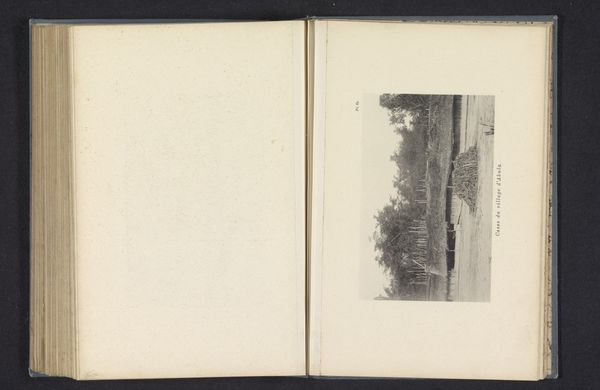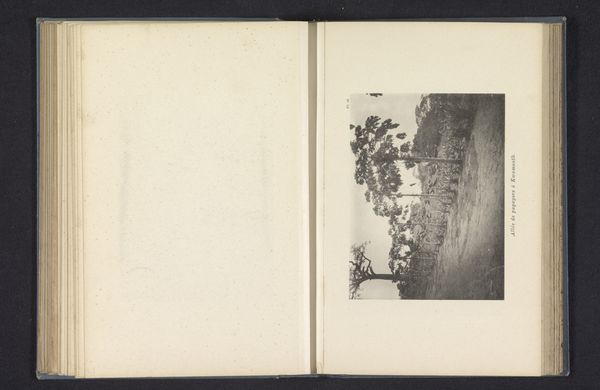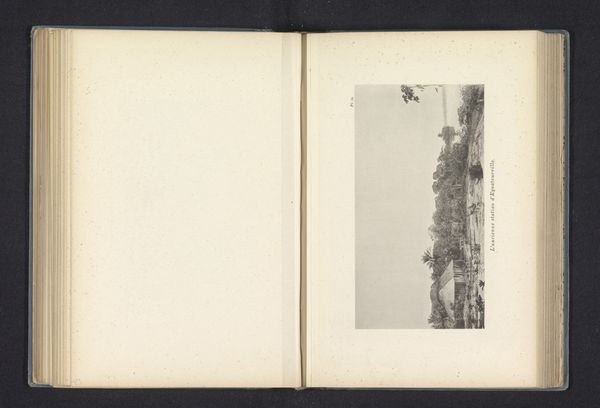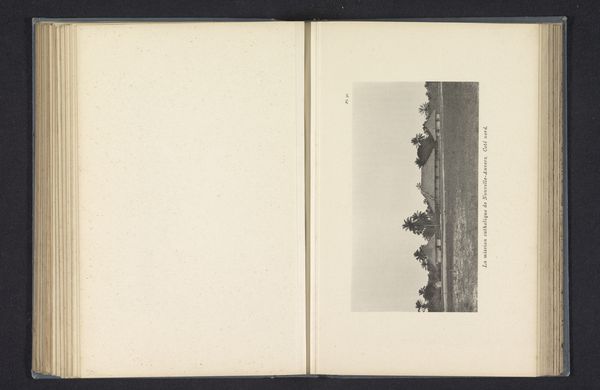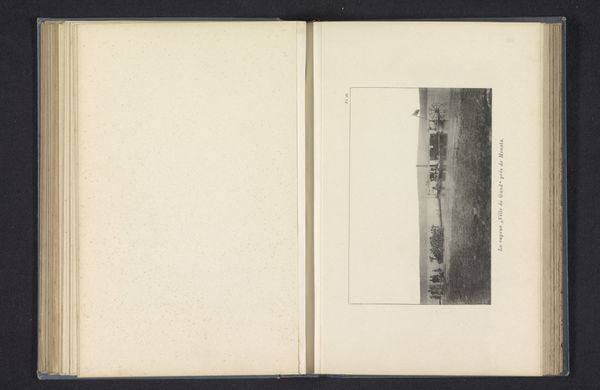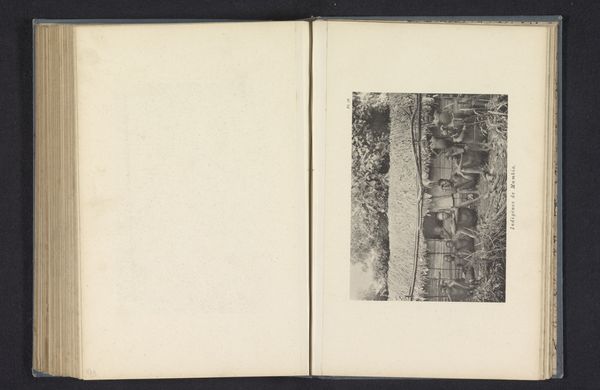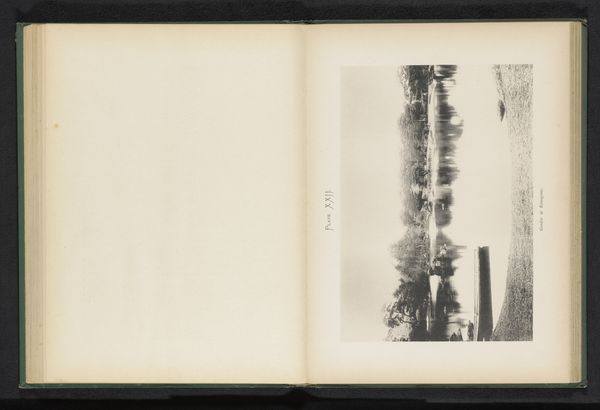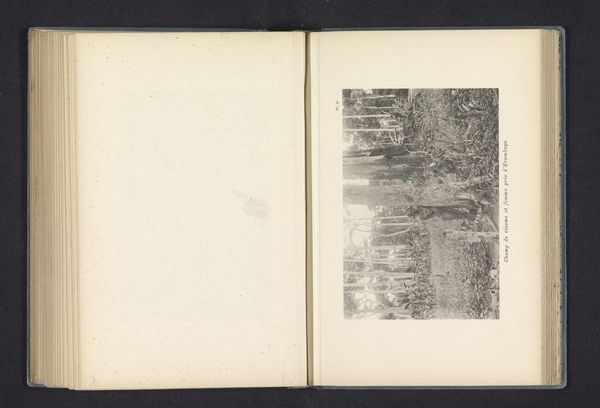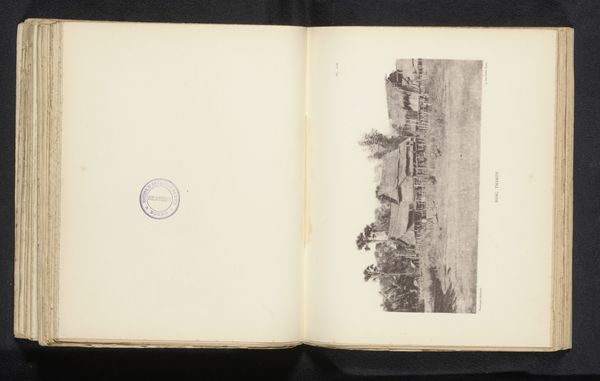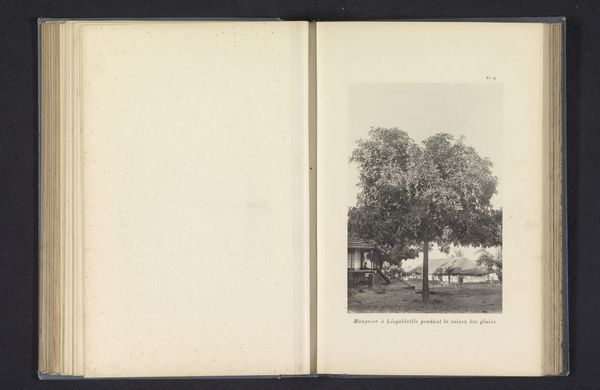
photography
#
african-art
#
landscape
#
photography
#
building
Dimensions: height 107 mm, width 163 mm
Copyright: Rijks Museum: Open Domain
Editor: Here we have a photograph titled "Exterieur van het stationsgebouw te Businga" – or "Exterior of the station building in Businga"– captured in 1896 by Franz Thonner. It’s this very stark image of a building surrounded by foliage, very of its time. I'm immediately drawn to the seemingly endless row of trees. It’s hard to make out much of the actual architecture. What do you see in this piece? Curator: Well, immediately I feel transported – though to where, exactly, I’m not sure. It has an archival feel, yes, like peeking into a forgotten corner of the world, or perhaps a vision of a not-so-distant colonial past, now softened by time and sepia tones. The building seems almost shy, doesn’t it, obscured by that vibrant green barricade? And consider this moment—photography itself was still fairly new, wouldn't you agree? Each exposure must have felt precious, a careful capturing of a specific, intended narrative, rather than an idle snapshot, for example. What kind of narrative do you think Thonner was aiming for here? Editor: Hmm, that's a good point. Maybe the intended narrative was of colonial progress, but inadvertently showcases the overwhelming landscape reclaiming the imposed structure. Curator: Precisely! The “station” – the supposed agent of progress – is dwarfed and nearly hidden by nature’s embrace. Perhaps there's a deeper dialogue about humanity's place within nature – our aspirations versus reality. Or maybe, it was all about selling the railway. Ha! Food for thought. Do you feel differently about it now? Editor: I do, actually. It’s no longer just an old photo; it’s a statement, maybe even a subtle rebellion hidden in plain sight! Curator: Or at least a beautiful ambivalence. Isn’t it delightful when art whispers instead of shouts?
Comments
No comments
Be the first to comment and join the conversation on the ultimate creative platform.
